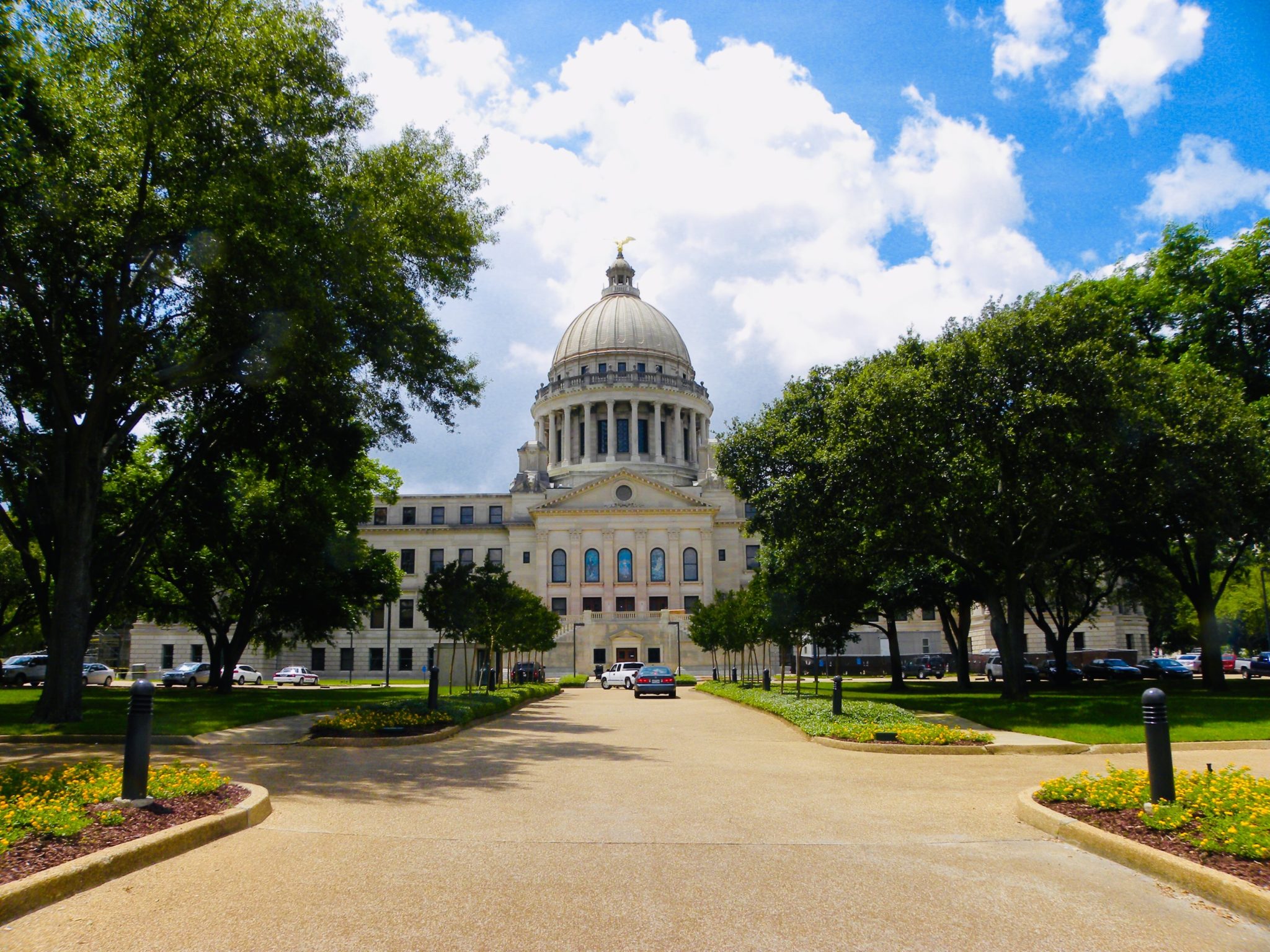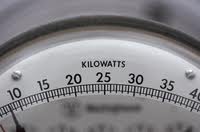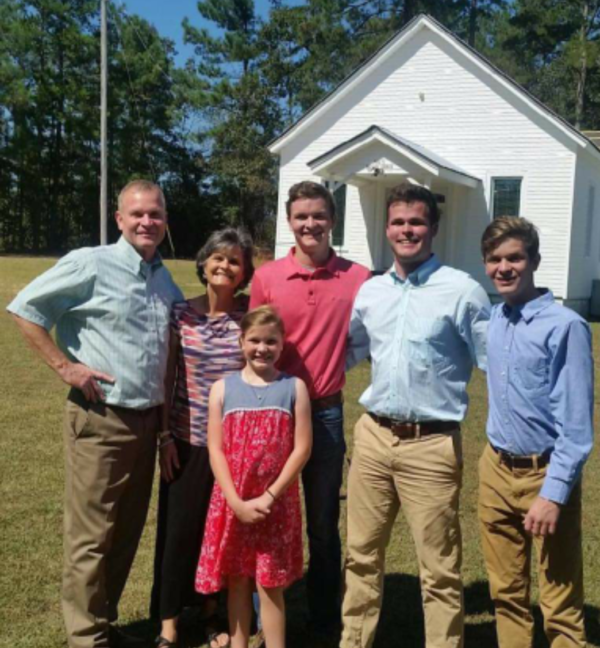Category: Policy
2020 Elections Highlights
Emmeline Luck
Elections & Energy Efficiency
Policymakers shape energy efficiency in a variety of ways. State legislatures assign the powers and jurisdiction of public service commissions (PSCs), the state agencies that regulate investor-owned utilities. PSCs regulate the rates and services of utilities operating in their states while balancing the interests of the utility, its customers, and the policy goals of the state. Legislatures may adjust the authority and mandates of the PSC and can influence the actions of monopoly utilities. In the Southeast, clean energy advancements often begin with the legislature. A notable example of energy legislation is The Virginia Clean Economy Act (VCEA), passed this spring. VCEA establishes a renewable portfolio standard and an energy efficiency resource standard, directing regulated utilities to reach certain levels of energy savings through energy efficiency and renewable energy.
The Florida Energy Efficiency and Conservation Act (FEECA), passed in 1980, has been the primary policy encouraging utilities to set energy efficiency goals. This year, after utilities proposed increasingly lower energy savings targets in the past two FEECA cycles, PSC commissioners and state legislators began to assess how they might reform or reinterpret FEECA to drive deeper energy savings.
Regulatory commissions determine the type and scale of the programs offered by utilities. At the federal level, senators and representatives can influence what type, and how much federal funding is made available to invest in energy infrastructure, workforce training and development, technological innovation, and economic development opportunities, as well as where that funding is directed. Congressional representatives may also support energy efficiency and other clean energy resources as part of national strategies for easing the impacts of climate change, which can spur state action.
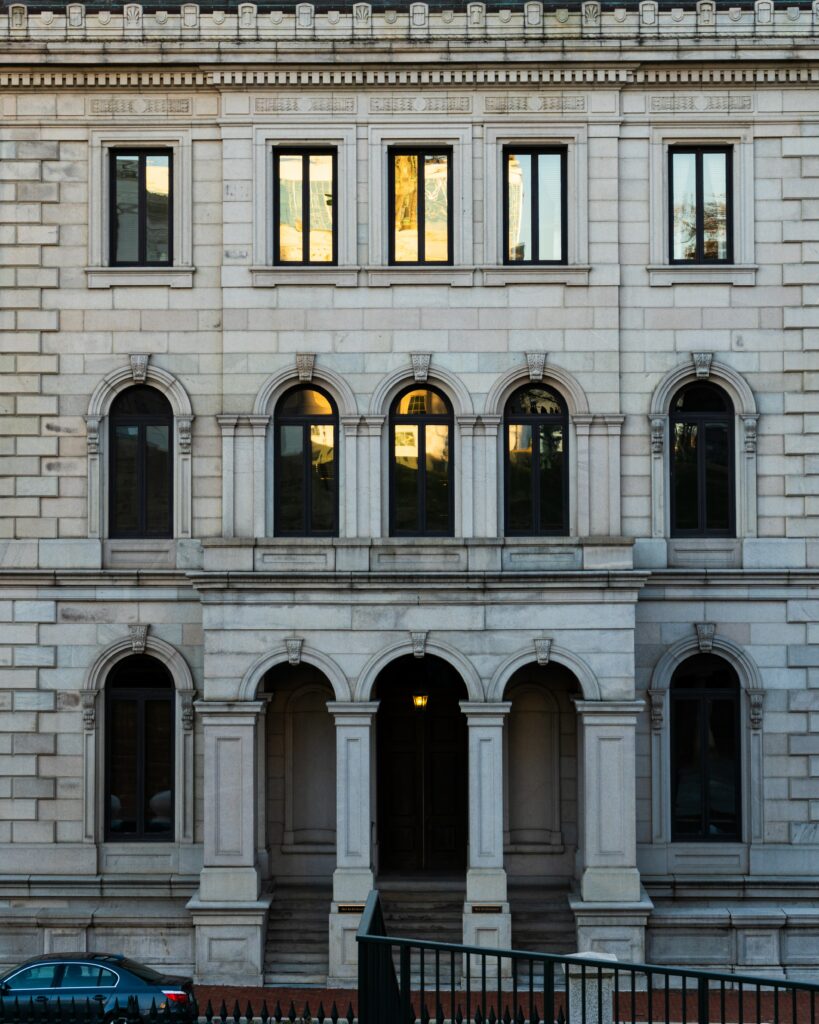
Election Results in the Southeast
*updated December 4, 2020
In the only gubernatorial election in the Southeast, incumbent North Carolina Governor Roy Cooper (D) won a second term against challenger Dan Forest (R), the state’s current lieutenant governor. There were many U.S. congressional seats up for election in the Southeast this year. We will address several key races featuring candidates with strong clean energy goals. In Georgia, Lucy McBath (D) was reelected to serve District 6 and Carolyn Bordeaux (D) won over incumbent Rob Woodall (R) in District 7. Virginia voters reelected Elaine Luria (D) and Abigail Spanberger (D) as representatives of District 2 and 7, respectively. For more information on the energy and environment positions of 2020 candidates, see the Where the Candidates Stand on Energy series from the Southern Alliance for Clean Energy.
There are several outstanding special and runoff elections across the region. The race for both of Georgia’s U.S. Senate seats will head to a runoff election on January 5, where voters will decide between incumbent David Perdue (R) and challenger Jon Ossoff (D) for one seat and incumbent Kelly Loeffler (R) and opponent Rev. Raphael Warnock (D) for the other. In November, Nikema Williams (D) was elected to fill the seat of the late Representative John Lewis (D) beginning in January. In a special election held on December 1 former City Councilman Kwanza Hall was elected to serve Georgia’s 5th Congressional District until Williams takes office.*
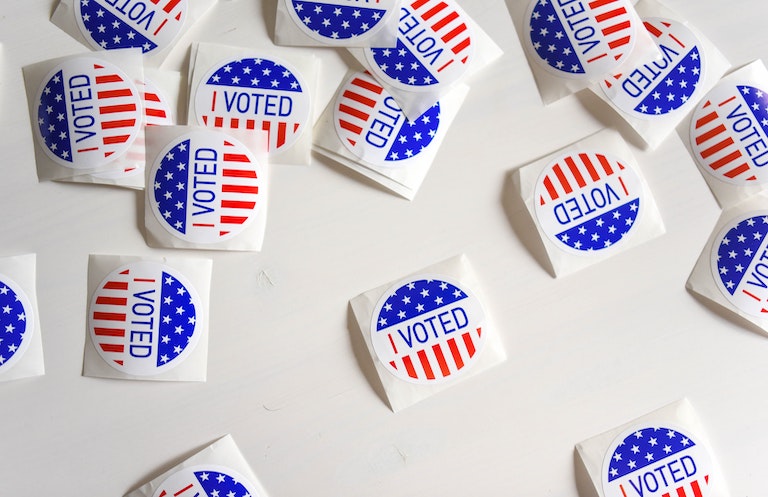
Regulatory Commissions
*updated December 4, 2020
Three of the four states in the Southeast that publicly elect commissioners held elections in November. In Alabama, Public Service Commission President Twinkle Cavanaugh (R) won reelection. Two seats were up on the five-member Georgia Public Service Commission. With 50.1% of votes, District 1 incumbent Jason Shaw (R) was elected over challenger Robert Bryant (D), who earned 46.2% of the votes. Two seats were also up for election on Louisiana’s five-member Public Service Commission, where Foster Campbell (D) won reelection to his final term for District 5.
In the race for Georgia Public Service Commissioner for District 4, neither incumbent Lauren “Bubba” McDonald (R) nor opponent Daniel Blackman (D) garnered the necessary 50% of total votes plus one vote to win. Voters will elect the winner in a runoff election that has been rescheduled to coincide with the federal runoff election on January 5. Louisiana will hold a runoff election on December 5 for the District 1 election between two-term incumbent Eric Skrmetta (R) and challenger Allen Borne, Jr. (D).
Several commissioners were appointed to the South Carolina Public Service Commission and to the Virginia State Corporation Commission this year. On June 9, Virginia Governor Ralph Northam (D) appointed ex-FERC official Jehmal T. Hudson to fill a vacancy on the three-member commission. Next year, legislators will vote to renew Hudson’s service for a full six-year term or to elect a replacement. Hudson is making history as the first Black person to serve on Virginia’s State Corporation Commission. In in August, Florida Governor Ron DeSantis (R) appointed legislator Michael La Rosa (R) to a four-year term on the five-member commission, beginning in January. On September 24, commissioners Stephen “Mike” Caston, Carolyn “Carolee” Williams, Headen B. Thomas, and Delton W. Powers, Jr. began their four-year terms on the seven-member South Carolina Public Service Commission. The appointments, made by Governor McMaster (R) with advice from the legislature, had been delayed since June due to the coronavirus pandemic. In July, Governor Tate Reeves (R) appointed Sally Doty (R) to serve as the Executive Director of the Mississippi Public Utilities Staff, the state’s ratepayer advocate. On November 30, the Senate Energy and Natural Resources Committee confirmed two candidates for the Federal Energy Regulatory Commission (FERC) – attorney and consultant Allison Clements (D) and current Virginia Commission Chair Mark Christie (R). Governor Northam (D), appointed former Deputy Commerce Secretary, Angela Navarro, to the seat on the Virginia State Corporation Commission vacated by Mark Christie’s appointment.*

Equity
Alabama and Mississippi voters have taken strides to advance equity via their ballot measures. Alabama voters approved an amendment that would begin the process of deleting racist language from the state’s constitution, which had been added during the Jim Crow era. Voters had previously rejected similar proposals twice since 2000, but the measure easily passed this year. In Mississippi, 68% of voters approved to adopt a redesigned state flag that replaces the Confederate symbol with the state flower, a magnolia blossom.
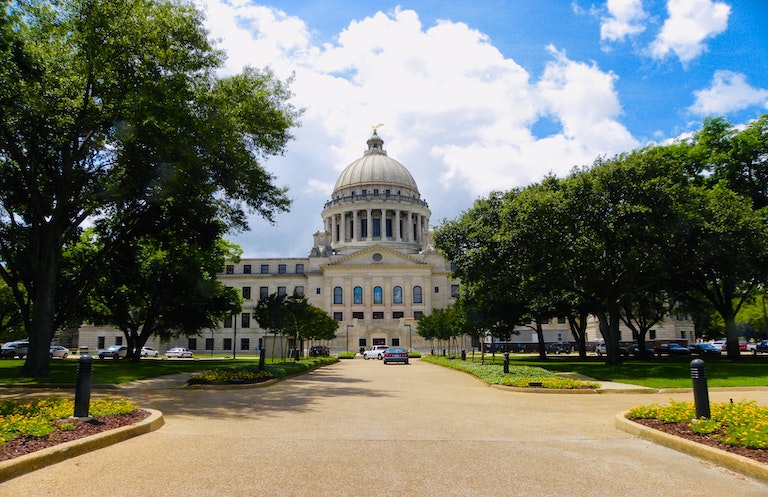
Legislation
In 2020, several Southeast states passed legislation supporting energy efficiency and electric vehicles (EVs).
Virginia
- Chapter 807 amends state code to authorize electric cooperatives to operate tariffed on-bill programs
- Chapter 961, designates an energy manager position for public facilities.
- Chapter 1208 was amended to improve the stakeholder and evaluation, measurement, and verification processes as they relate to energy efficiency and integrated resource planning.
- Chapter 799 was revised to require industrial customers that opt out of state energy efficiency programs to implement their own programs and to verify savings through EM&V.
South Carolina
- Act 138 extends an energy efficiency tax credit for manufactured homes for an additional five years.
- Act 187, establishes an Electricity Market Reform Measures Study Committee to assess the possibility of creating a regional transmission organization.
Lawmakers did not get the opportunity to act on some legislation due to the pandemic, including S 922, which would facilitate third-party EV charging. Senator Wes Climer (R), sponsor of S 922, has voiced his intention to reintroduce the bill next session.
Florida
- SB 7018 develops a plan to construct EV charging infrastructure along the state’s highways.
2021 Legislative Session Schedules
| Convenes | Adjourns | |||
| AL | February 2 | May 31* | ||
| AR | January 11 | April 24* | ||
| FL | March 2 | April 30* | ||
| GA | January 11 | April 2* | ||
| KY | January 5 | March 30* | ||
| LA | April 12 | June 10* | ||
| MS | January 5 | April 2* | ||
| NC | January 13 | June 30* | ||
| SC | January 12 | June 15* | ||
| TN | January 12 | May 7* | ||
| VA | January 13 | February 11* |
*estimated adjourn date
Source: http://www.statescape.com/resources/legislative/session-schedules/
This post recaps important state legislation and gives an overview of the results of state and federal elections and appointments as they pertain to energy efficiency. This post is not intended to serve as a comprehensive resource of policy updates that may impact energy efficiency, but to provide a regional perspective on decisionmakers that influence energy efficiency and related topics. The 270 to Win House and Senate maps provide the current and projected election results in state legislatures.
How do listening and learning move us toward more equitable solutions?

“The utility sector needs more empathy!” Those were the words of one participant during a recent virtual SEEA member meeting hosted by our energy efficiency policy (EEP) team. The group was discussing future innovation in utility energy efficiency programs in response to COVID-19 safety precautions.
Since the onset of the pandemic, SEEA has been connecting with our members and partners to understand the impact of the immediate and long-term changes to the energy industry. Through this outreach the EEP team identified three key issues important to our network: energy efficiency workforce, energy insecurity, and utility energy efficiency programs. By this summer, we were starting to see and hear that utilities were likely to retain some of the changes they made to their utility energy efficiency programs including virtual audits, installation, and verification. Targeting and engaging customers remotely exposed existing challenges for historically underserved communities such as broadband access, lack of capital, and the need for innovative financing options.
On September 16, the EEP team brought together member utilities, service providers, and manufacturers to discuss industry innovations. The agenda included the design and delivery of energy efficiency programs, and how these changes might affect existing inequities.
What happened was far more interesting.
When policy manager Claudette Ayanaba introduced the equity discussion, the passionate response carried us in an entirely different direction than planned.
The route to equitably delivering the benefits of energy efficiency programs did not depend on innovation in technology, or insight drawn from the multiple crises we are currently facing. Instead, we heard a heartfelt urging for empathy and understanding.
Utility Energy Efficiency Programs Need Cultural Context
Most programs appear to be designed for “all” customers. However, when those doing the designing are predominately white and male, we cannot effectively capture or respond to the needs of historically underserved customers, which are most often minority communities. Enlisting a diverse workforce, particularly leadership, improves our ability to capture and integrate important factors into energy efficiency programs that equitably distribute their benefits. One member offered a specific and common example that a home with a hole in the wall won’t see meaningful results from a smart thermostat. While utilities can’t fix holes in the wall or other building conditions, designing programs that ignore these realities maintains a system of inequity.
Minority Communities Are Interested in the Environment and Conservation
Another member shared that Black, Hispanic, and other non-white communities have historically been perceived as less interested in energy and environmental issues, even though there is ample evidence to the contrary. If this belief is carried into the design of energy efficiency programs, even unconsciously, then those programs are less likely to benefit non-white customers.
Utilities Have Opportunities to More Holistically Engage Their Communities
One utility is helping Black families retain and manage their forest property, leveraging resources from the U.S. Endowment for Forestry and Communities. While it may seem unusual for a utility to engage in forestry, the utility has worked with landowners to develop microgrids on their farms, which supports the utility’s grid, reduces line losses, increases reliability, and spurs economic development in one of the poorest counties in the United States. The program treats past injustices, present inequity, and future opportunities for the entire community.
The Energy Efficiency Workforce Needs Teachers
Change may come from the top, but the contractors interacting with customers on a regular basis play a critical role in implementing the environmental, financial, and health benefits of energy efficiency. However, not all contractors are trained or encouraged to help customers understand and capitalize on the energy efficiency opportunities available to them. Taking time to listen to the needs of customers, establish trust, and lead them through the process for making upgrades improves program success and sustainability.
Building a more energy efficient, prosperous, and equitable Southeast requires all of us at times to be both teachers and students. We value and seek out your stories, your triumphs and challenges. We want to learn from our members, partners, and community-based experts on how we can work together to leverage energy efficiency for everyone.
Join us for an upcoming event!
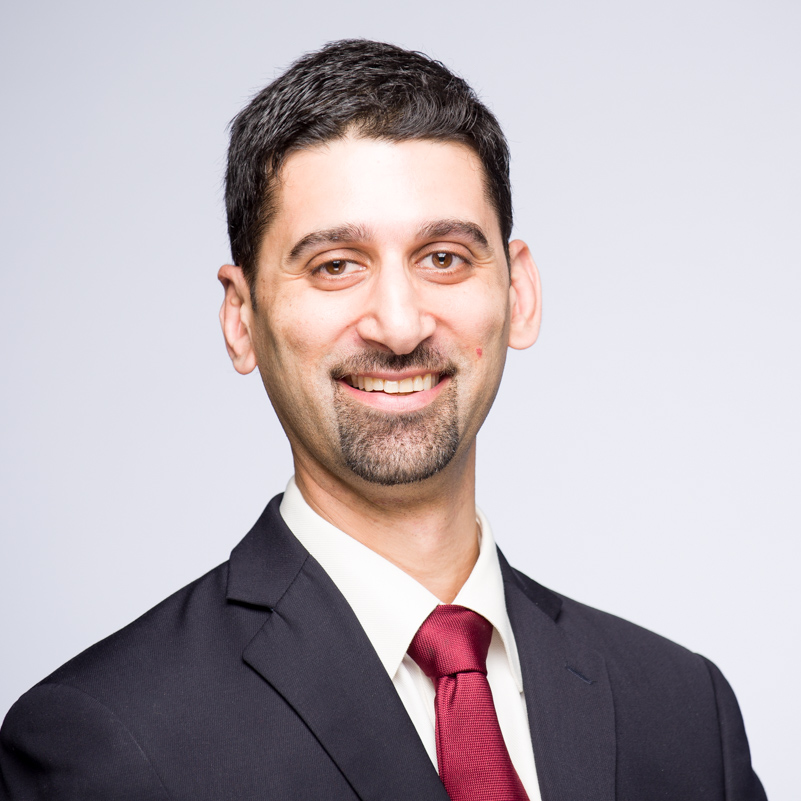
Cyrus Bhedwar Director of Policy Email Schedule a call View Bio
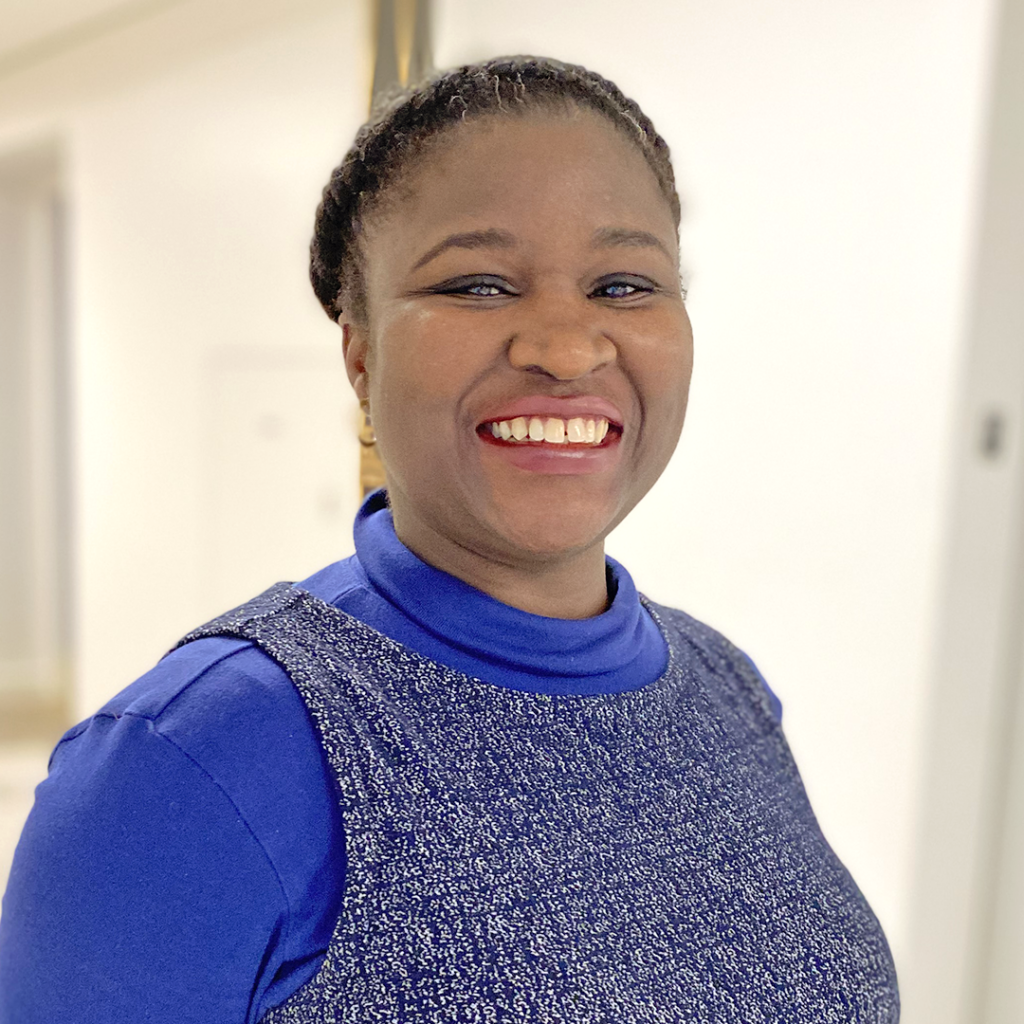
Claudette Ayanaba Policy Manager Email Schedule a call View Bio
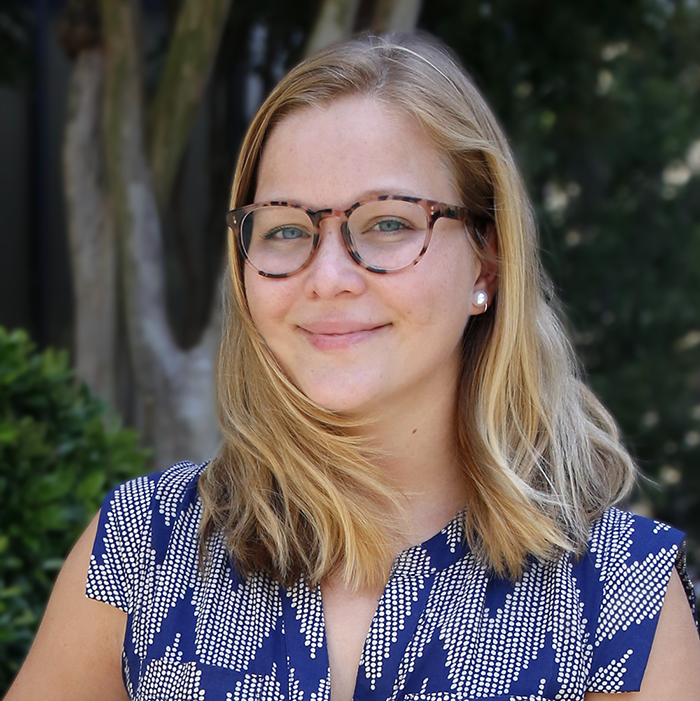
Emme Luck Policy Associate
A Tale of Two Tariffs: Ouachita Electric Cooperative and Roanoke Electric Cooperative
SEEA Staff
We spoke with Mark Cayce of Ouachita Electric Cooperative and Marshall Cherry from Roanoke Electric Cooperative on how they have implemented tariffed on-bill programs, HELP PAYS and Upgrade to Save respectively. Both utilities use the Pay As You Save® (PAYS®) system and third-party administrators to support their programs.
Tariffed On-Bill is a model where the investment in the energy performance of homes and buildings is recognized as a system reliability investment and the utility utilizes their established authority to add tariffs for system investments to consumer bills as the collection mechanism.
A tariff is not categorized as a loan to the customer. Therefore, it does not add to the debt profile of the property owner the way a bank loan would. The investment in energy savings is tied to the meter of the physical property and it is transferable with the sale of the property.
A notable benefit of this model is that it can be utilized by renters and is more easily accessible for customers with limited credit or low credit scores.
What was the motivation to start a tariffed on-bill program?
Mark: We initially started looking at this in 2013 because we wanted to see what we could specifically do to help our residential members. Things were getting tough in our region and we have a high percentage of low-income and senior members who couldn’t always pay their bill. We have always given advice on weatherization, and had tried financing programs for upgrades to insulation and duct-sealing, but we couldn’t reach the people that needed to lower their bills because of financial limitations and many of those members lived in rental properties or apartments.
Marshall: Our board learned about the concept about 4 to 5 years ago. Our board of directors has always been interested in finding ways to be more inclusive through energy efficiency financing tools. We serve one of the most economically distressed areas of the state and country. We’re in the first congressional district, one of the poorest districts in the U.S. As a co-op, it’s our mission to serve the community and address these needs.
What has been the business impact of your tariffed on-bill program?
Mark: In 2015, the Energy Efficiency Institute and Clean Energy Works contacted us about tariffed on-bill. I could immediately see the benefits. We could use our cost of capital, which isn’t available to individuals, to create the tariff. It’s not a loan, it’s an investment we’re making in their property. There’s a big difference in that. Alongside Cyrus Bhedwar from SEEA, we worked with the Arkansas Energy Office to secure a $100,000 loan loss reserve. The NC Sustainable Energy Foundation also added a $50,000 loan loss reserve. We haven’t had to collect on any of it, but knowing that we have that backing, made starting the program feel less risky. We wrote a tariff to collect on-bill, sent that to the public service commission in the fall of 2015, and it was approved in 2016 without any changes. After the first year, we had invested in almost $3 million in local member homes.
With weatherization and HVAC, we’re averaging an 18% reduction in demand across all members. Some are as high are as 30-40%. Adding solar moves the savings up to 70-80%. Overall, our cost of power has decreased. For every residential project completed, we’re seeing a 1.5 to 2 MW reduction for peak demand. Because we’ve done 700 projects and added solar, we’ve reduced our summer peak by about 30%. These, and other factors, all contributed to OEC implementing a 4.5% rate decrease on February 1, 2020.
Marshall: It’s made a big impact from a member satisfaction standpoint. We’re reaching more member-owners and making them more comfortable in their homes. We have a found a methodology to address some of the barriers like landlords, individuals not wanting to take on additional debt, or those with credit issues. That has given us a high impact tool to place in our kit that we can use to respond to high bill concerns and helps us do additional outreach. It has also really supported our operating costs. We’re learning that in many cases, our users are high contributors to our peak demand. We are experiencing savings during peak events. It’s showing an internal rate of return. Although we’re selling fewer kwh, we’re experiencing lower demand on the system. The more we can bring the demand down, the more we can flatten our energy sales through any given month and our price point is cheaper and we’re in a better position to sell affordable energy to our member-owners.
What has been the community impact of your tariffed on-bill program?
Mark: We required local contractors, so that we’re investing in our members, but we’re also investing in the community. We’ve spent almost $5 million in investments, and the majority of it, over $2.5 million, has gone directly to local contractors. We also have nonprofits, schools, senior centers, and the county jail participating in the HELP PAYS program. We’re working on the county courthouse right now. Rural schools and rural cities have the same challenges as our residential members with limited access to capital and state budgets that don’t allow for improvements. At the Arkansas Law Enforcement Academy, they were working with a 1960’s boiler system for their heating and cooling in the dorm. We replaced it with mini split heat pumps. We also converted all of their lighting to LED. The state was considering if they wanted to move the training facility somewhere else, and that helped us guarantee that we can keep them here. The academy has about 50 jobs, but also hundreds of cadets come through every year.
Marshall: Overall, we hear great remarks from our member-owners who participate. In many cases we’ve installed new heat pumps; we’ve converted from a propane unit to an electric heat pump. So, there’s good quality of life, comfort, and savings, that they wouldn’t have been able purchase otherwise.
We’re also learning that the local contractors have a kindred spirit when it matches up against the co-op business model. When I hear them say they want to do what’s best for the member, that really lines up with our values. Our contractors go above and beyond to provide quality service. They see the bigger picture and opportunity. We have about $3 million invested in our community. There are contractors who are able to benefit from that investment. They can add employees to help with this work. As their bills decrease, member-owners have more disposable income available to reinvest back into the community. Those two elements support the local economy.
What advice would you give to other utilities exploring tariffed on-bill financing?
Mark: I think they should really look at it. I know their members want it; they know their members need it. They can benefit their members and their own co-ops by bringing that service. By cutting peak demand, we can reduce new plants being built. We’re looking at two coal plants being shut down in the next 7-8 years that don’t have to be replaced. That’s a good thing; that keeps costs down. I think there’s a lot of reluctance and fear with other utilities to jump in the way we have. It’s tough to change. But I’m seeing that a lot of co-ops are considering things now they wouldn’t have four years ago. I think the demand from the consumers is driving that. We’ve gone from an attitude of selling as much electricity as we can to an attitude of serving our customers as best we can. They get lower bills, we get lower costs, everyone wins.
Marshall: Well, I’d say a couple of things. Tariffed on-bill is an opportunity to add another high impact program to your toolkit. We all have high bill complaints. It’s a good response you can provide through data and the losses are very minimal. By applying it as a tariff to the bill, the tariff stays with the location until we’re made whole. It’s a high impact program, and there are companies that are shovel-ready to help get you started. It’s a challenge to manage a tariffed on-bill internally. Along with the intellectual property with the PAYS® model, the work we’re doing with companies like EEtility make the difference. The more companies providing operator services with value systems aligned with the co-op business model will be the pathway forward. We’ve had some great support, even with loan applications to make sure we’re in a good position to receive the line of credit, or legally to make sure we’re in compliance in rolling out a tariff on the bill. A lot of different layers of support have helped us make the program mainstream.
SEEA recently published a tariffed on-bill financing guide for utilities. You can read the report here.
The Fall and Rise of Energy Conservation Codes
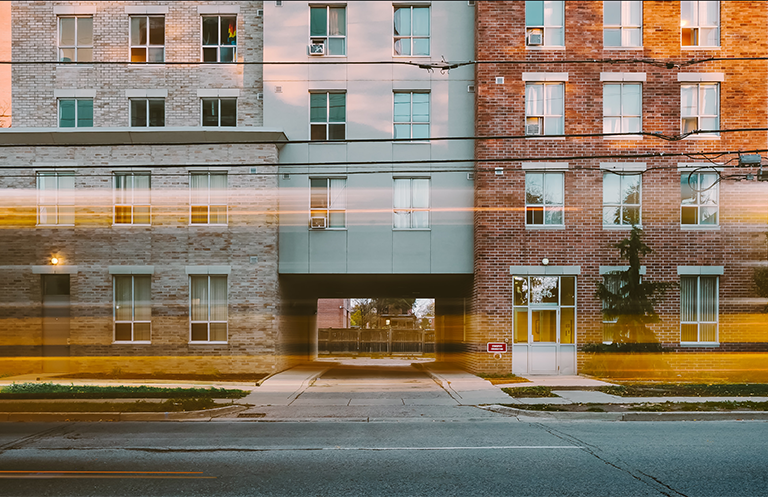
Energy conservation codes are making a comeback.
Commercial and residential buildings are energy hogs that consume more than 40% of all energy produced in the United States. Almost a third of this is wasted. Since their inception in the 1970s, energy codes have stemmed these losses and reduced the footprint of America’s building stock. They are one of the few tools available to ensure that the spaces where we spend most of our time are constructed to minimum acceptable standards for comfort, cost, and quality. Although mostly unknown outside of the building industry, these codes matter; a lot.
After two decades with only small gains, in the early 2000s the newest model energy codes—those regularly developed by organizations like the International Code Council (ICC) and ASHRAE as examples for policymakers—began to significantly improve in efficiency with each version. A home built to the 2012 residential code developed by the ICC, for instance, is 32% more efficient than a home built to the standard from just six years earlier. These gains may seem abstract, but they mean that a homeowner will pocket anywhere from $218 to $1,588 each year, saving between $4,763 and $33,105 over the life of a typical mortgage.
In recent years, however, this progress has stalled again. Since the peak in 2012 new model codes have only been marginally more efficient than their predecessors. The 2018 and 2015 versions of the residential energy code developed by the ICC combined are less than 3% more efficient than the 2012 edition. Meeting the 2018 code will only save $20 to $59 each year—ten times less than the savings that accrued in the previous six-year cycle. Although there were still plenty of improvements to be made, by 2018 it looked as if model energy codes might relapse to the stagnation of the 1980s and 1990s, when efficiency gains were few and far between.
This decline was reversed in December 2019 after International Code Council voters supported strong energy efficiency standards for the 2021 code. These voters, who are local government representatives, approved new requirements that include pathways to zero energy, preparations for building electrification, more efficient insulation, home charging infrastructure for electric vehicles, more stringent lighting requirements, and first-of-their-kind standards for water heaters. The new code also provides builders with more flexibility than ever before by allowing them to choose from a series of efficiency configurations to demonstrate compliance. These and other measures will make new buildings more efficient than ever before. Even more significant, they have given new life to a code development process where only minimum improvements in efficiency were becoming the rule.
This is not the end of the story, however. In order to fully realize the new opportunities made available by the 2021 code, state and local policymakers must write these standards into law. This will take the partnership of utilities, manufacturers, retailers, builders, and residents to collectively support cutting-edge energy codes that will reduce the energy footprint of America’s buildings, lower costs, and elevate quality.
Questions? Contact William Bryan, built environment project manager
A Service Heart
SEEA Staff

Danny Kilpatrick’s childhood home in rural Mississippi was frequently warmed by “oven-heat.” He knows first-hand the fear and worry low-income households feel when their monthly utility bills are due. Danny serves a lot of customers in the Mississippi Delta, a region distressed by deep, systemic poverty. “The opportunities here are sparse or nonexistent. Many people can’t go anywhere else.” With his experience in one hand, and his faith in the other, Danny left a steady, corporate career and launched Utility Program Services (UPS) in 2018. UPS provides demand-side management (DSM) measures focused on serving low-income communities. Danny currently serves the customers of Entergy Mississippi, Mississippi Power Co., and Entergy Arkansas. This year, over 92% of their residential deliveries were in homes that received at least one form of assistance.
In 2013, SEEA partnered with the Mississippi Development Authority’s Energy & Natural Resources Division to build support for the adoption of Rule 29: Conservation and Energy Efficiency Programs, establishing Mississippi’s first, state-wide utility energy efficiency programs. The Quick Start phase of the rule encouraged utilities to implement energy efficiency programs in just three years. During that time, Danny was at job he enjoyed and was grateful for, managing business development and DSM programs for ICF International. However, when the Quick Start programs launched in 2014, he envisioned working with customers in a deeper way, beyond the constraints of fixed contracts. “If you have a service heart in the service business, then you’ll do well.” Danny tells the story of a visit with a customer a few months ago, in the height of summer. “She was sitting on her porch when I arrived at 2 p.m. on an August afternoon. I thought her air conditioner was broken, but I learned her electricity bill for July was one-third of her monthly income and she was on the porch because she could not afford to operate her air conditioner.” Danny provided the contracted service, tuning up her HVAC, but right away he noticed the root cause of her high utility bills. Her dryer vent was two feet from the condensing unit, which was coated with lint, and the mercury bulb thermostat was mounted to an uninsulated wall of the air handler closet, which was open to the attic. Knowing the difference it could make in this customer’s life, Danny made the necessary repairs. He says this is the reason he chose to be self-employed, “I just do what I do, and it speaks for itself.” His generosity ripples through his community and his family, a kindness that especially resonates during the holidays. SEEA’s president, Mandy Mahoney, recently received a hand-crafted bird house made by Danny and his daughter. The family tradition started nearly 15 years ago with his eldest son, Ethan after they received a bird house from a family friend. Danny estimates that he and his children have made over 1,200 bird houses. Now in his twenties, Ethan, with his business partner Jeremiah, has started his own energy efficiency business providing weatherization services to low income clients.
Since the adoption of Rule 29, Mississippi’s energy efficiency rank on ACEEE’s “State Energy Efficiency Scorecard” has risen six spots from 51 to 45, becoming one of the most improved states in the nation.


